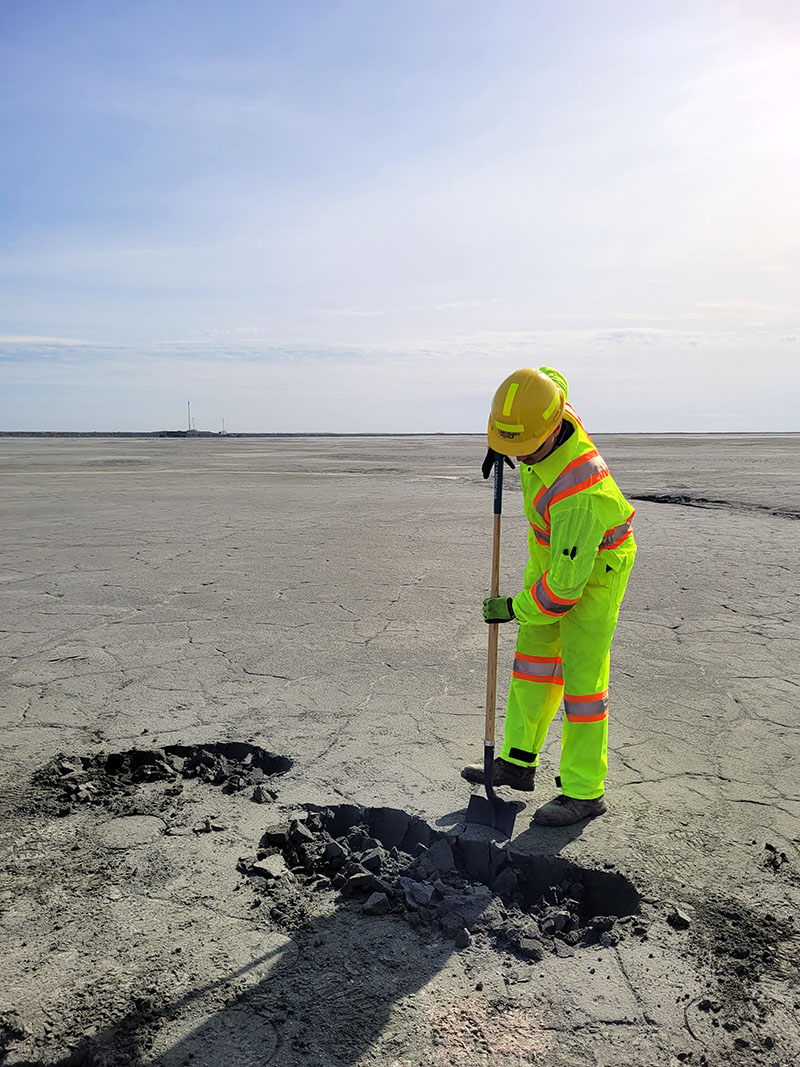The open expanse of Saskatchewan’s Prairie landscape quietly recedes into a thick band of spruce, pine and fir trees only a few hours’ drive north of the University of Saskatchewan’s (USask) campus. Stretching for more than 400,000 km2, the province’s boreal forest is just a snapshot of a large network of trees and hardy plants that reach across the entire country.
Levi Lundell, soil science master student in the College of Agriculture and Bioresources (AgBio), is getting to the root of a big issue impacting Canada’s boreal forest. Working with Drs. Derek Peak (PhD) and Katherine Stewart (PhD), Lundell is investigating how boreal plants interact with contaminants from metal mines to see if these plants can be used in remediation and restoration efforts of abandoned or actively managed metal mine tailings.
“Metal mining is a huge part of the Canadian economy and there are sites scattered across our boreal forest,” said Lundell. “Over their lifespan, these mines produce a byproduct we call tailings. For mines, these tailings can sometimes be high in heavy metals which then can move through the surrounding environment.”
Lundell says that researchers have observed plants returning to some mine sites after they have been abandoned for several decades, but very little is understood about how these plants are interacting with the metals and other elements in the soils and tailings.
“We want to know how these boreal plant species respond to growing in soils and tailings that contain high levels of metal,” said Lundell. “We are investigating which species survive the best, how we can improve their growth and if these plants are pulling metals into their leaves and stems for animals to ingest.” 
To conduct this research, Lundell samples mine tailings and the plants growing at these mine sites. Over the summer of 2024, Lundell grew these plants in the College of AgBio greenhouses, measuring their growth and preparing them for analysis in the lab.
Click here to see more...